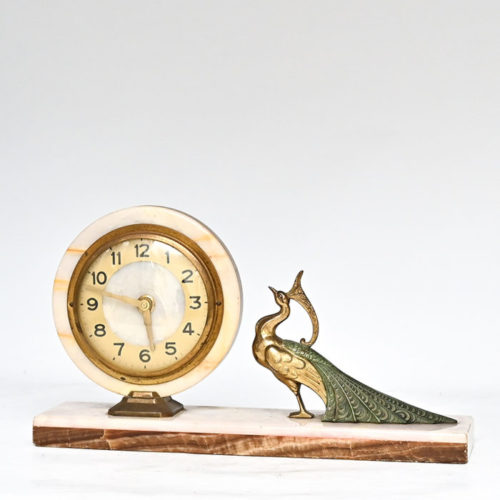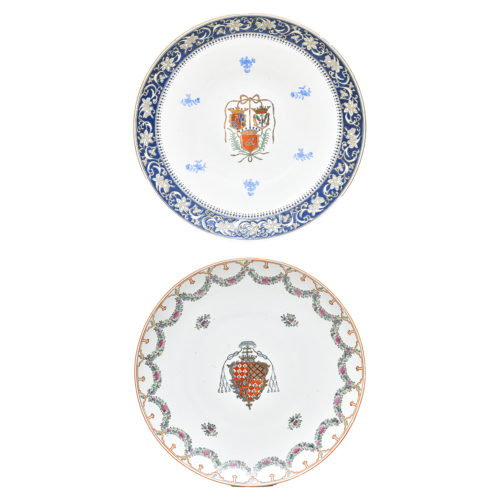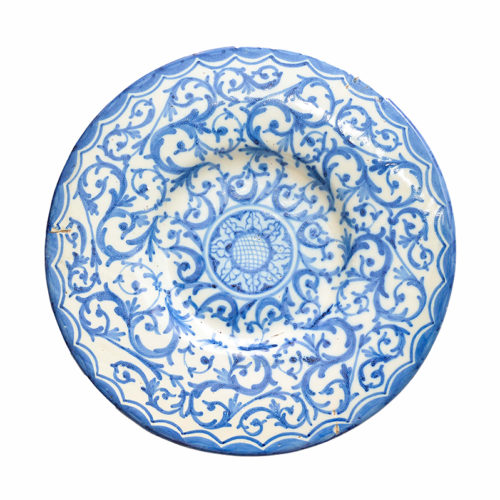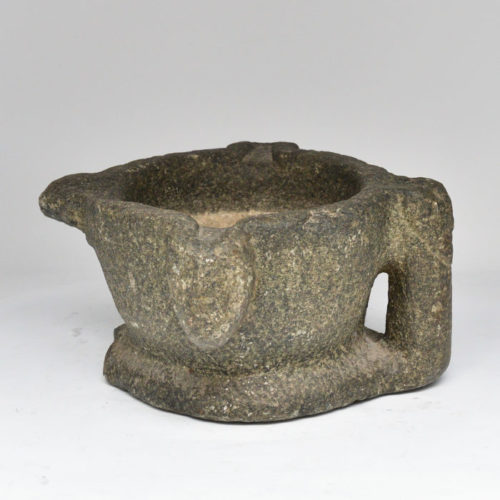Large ceramic plate depicting the taking of Constantinople, painted by Bruno Brolli, manufactured by Carlo Morelli.
The manufacture for the production of artistic ceramics "Studio Ceramico Morelli" was founded in Faenza, by Mario Morelli in 1934. The manufacture, in which numerous young artists collaboratde including Antonio Albonetti, the plasticizer Domenico Matteucci, and even if only occasionally, Emilio Casadio, Battista Casanova, Bruno Innocenti and Angelo Biancini, participates in all the exhibitions of decorative art and ceramics obtaining numerous awards. In 1950 it was sold. Ceramics from the factory are kept in the Ceramics Museum of Faenza.
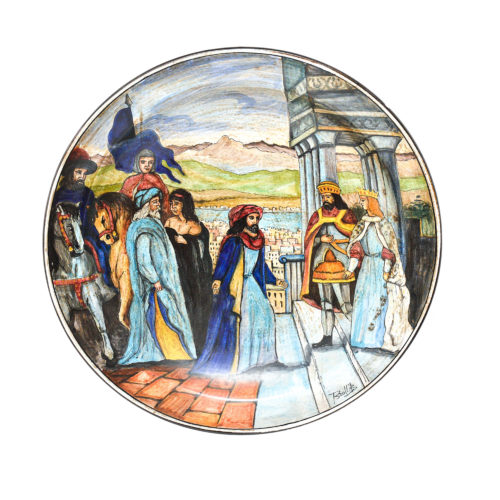 Large ceramic plate depicting the taking of Constantinople, painted by Bruno Brolli, manufactured by Carlo Morelli. The manufacture for the production of artistic ceramics "Studio Ceramico Morelli" was founded in Faenza, by Mario Morelli in 1934. The manufacture, in which numerous young artists collaboratde including Antonio Albonetti, the plasticizer Domenico Matteucci, and even if only occasionally, Emilio Casadio, Battista Casanova, Bruno Innocenti and Angelo Biancini, participates in all the exhibitions of decorative art and ceramics obtaining numerous awards. In 1950 it was sold. Ceramics from the factory are kept in the Ceramics Museum of Faenza.Period: 1940s Measurements: Ø 44.5 x P 7 cm
Large ceramic plate depicting the taking of Constantinople, painted by Bruno Brolli, manufactured by Carlo Morelli. The manufacture for the production of artistic ceramics "Studio Ceramico Morelli" was founded in Faenza, by Mario Morelli in 1934. The manufacture, in which numerous young artists collaboratde including Antonio Albonetti, the plasticizer Domenico Matteucci, and even if only occasionally, Emilio Casadio, Battista Casanova, Bruno Innocenti and Angelo Biancini, participates in all the exhibitions of decorative art and ceramics obtaining numerous awards. In 1950 it was sold. Ceramics from the factory are kept in the Ceramics Museum of Faenza.Period: 1940s Measurements: Ø 44.5 x P 7 cm